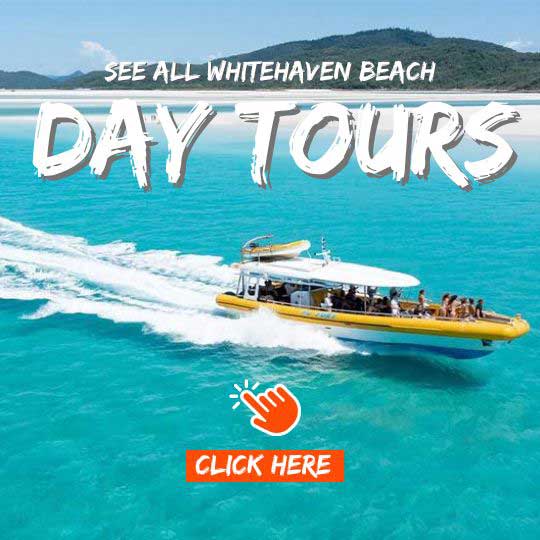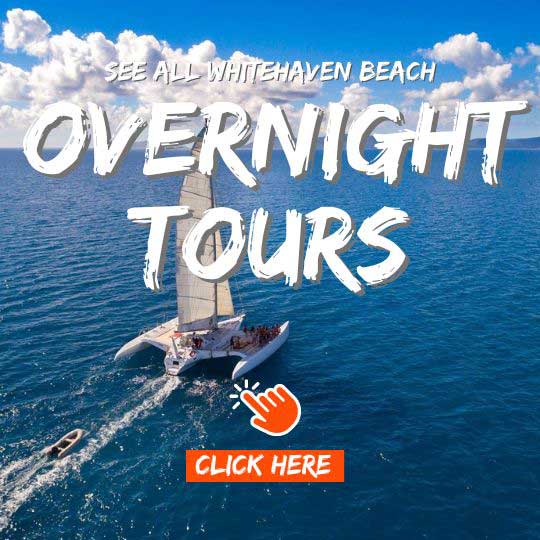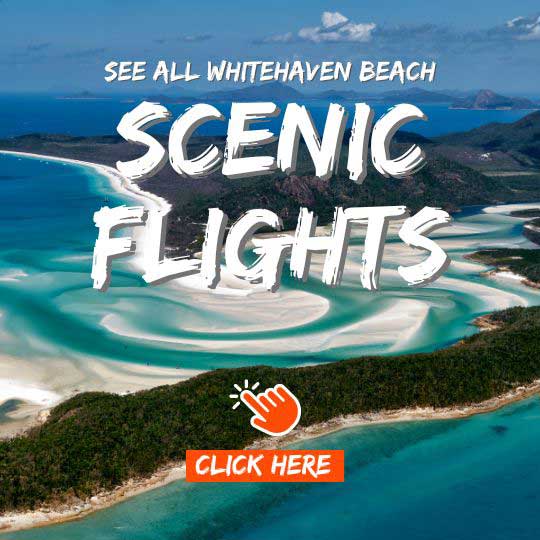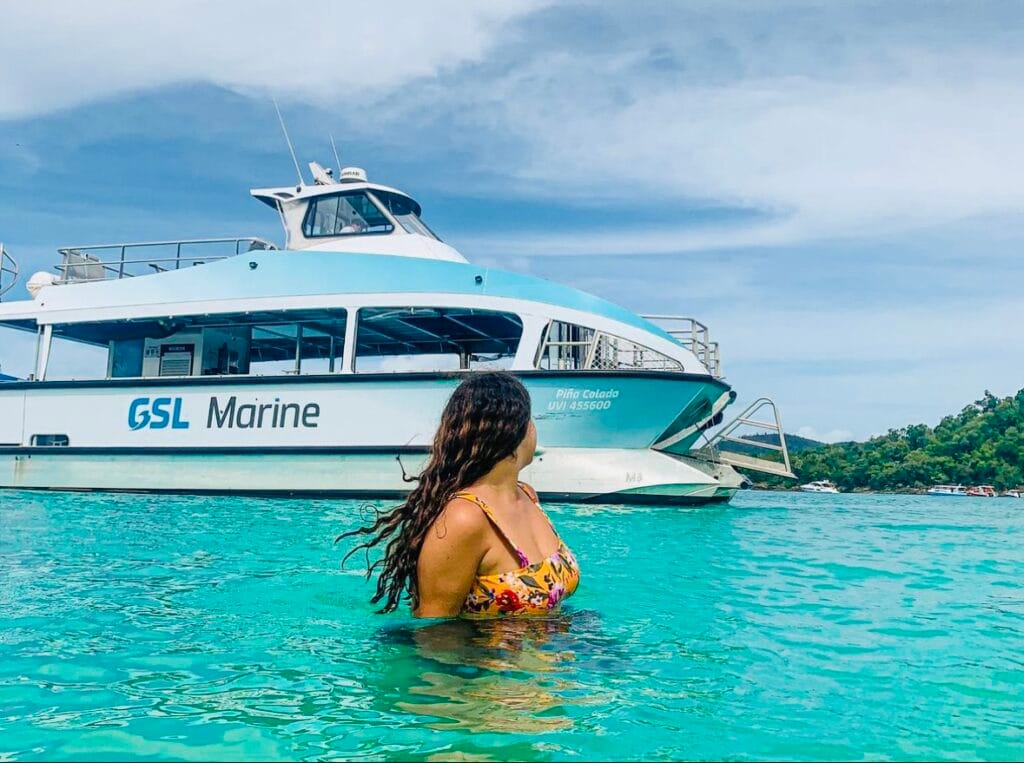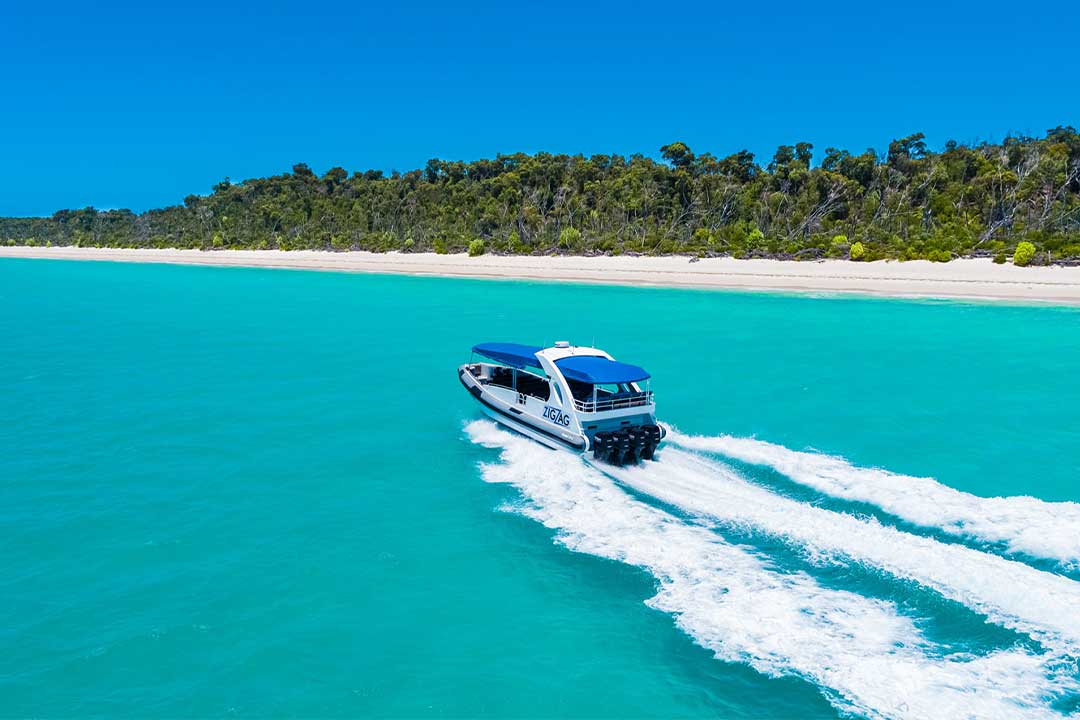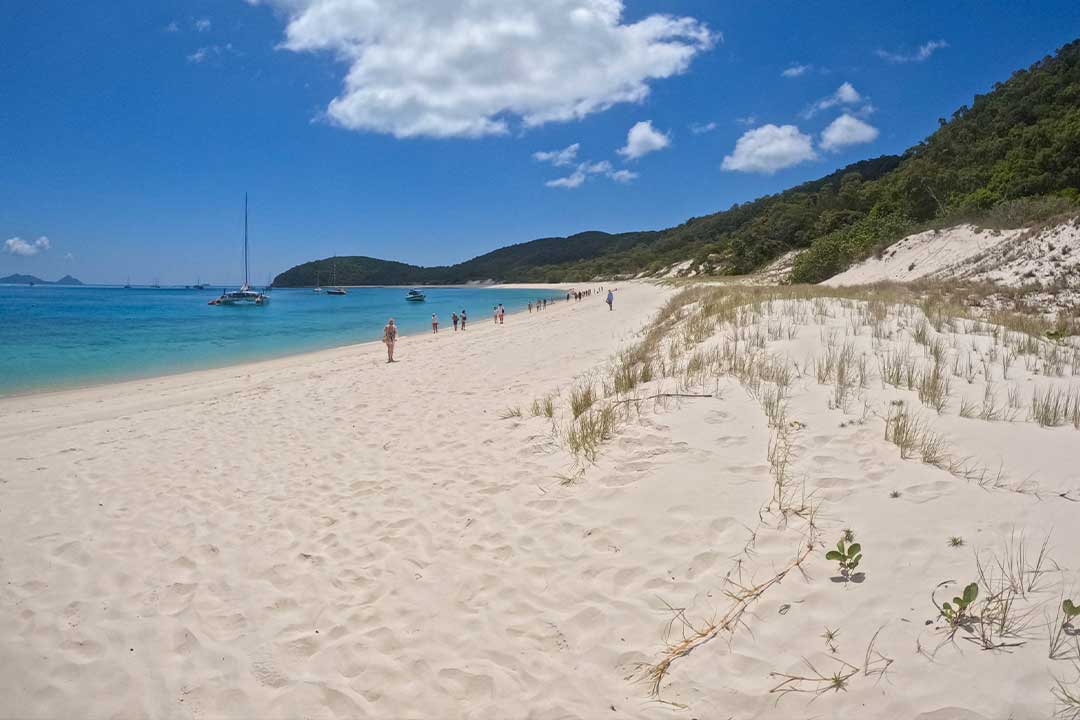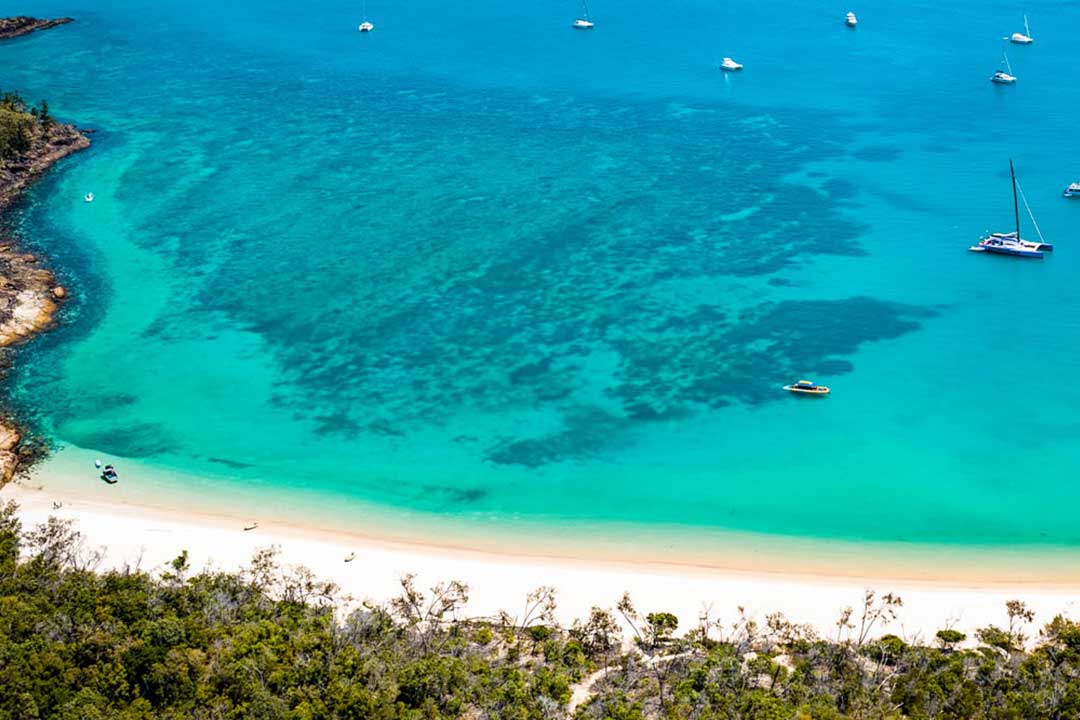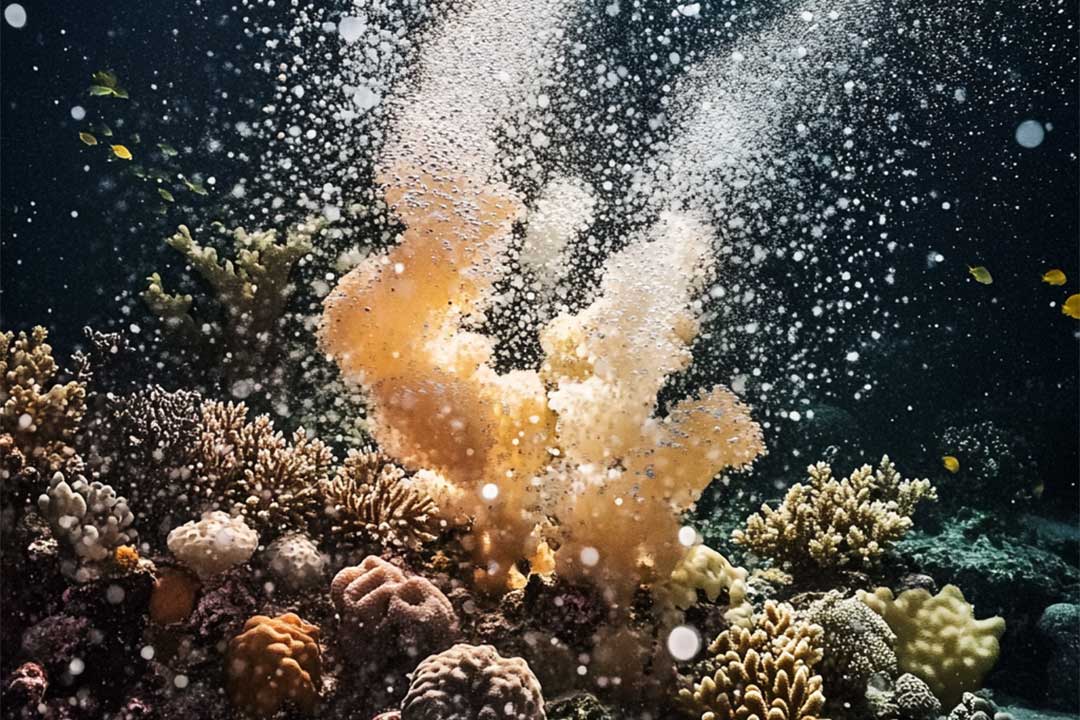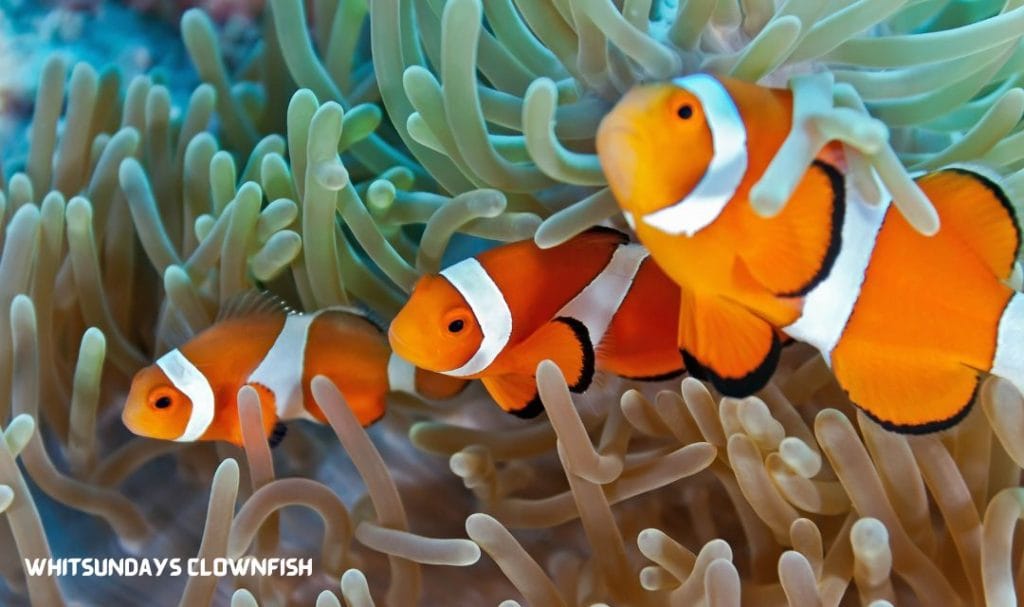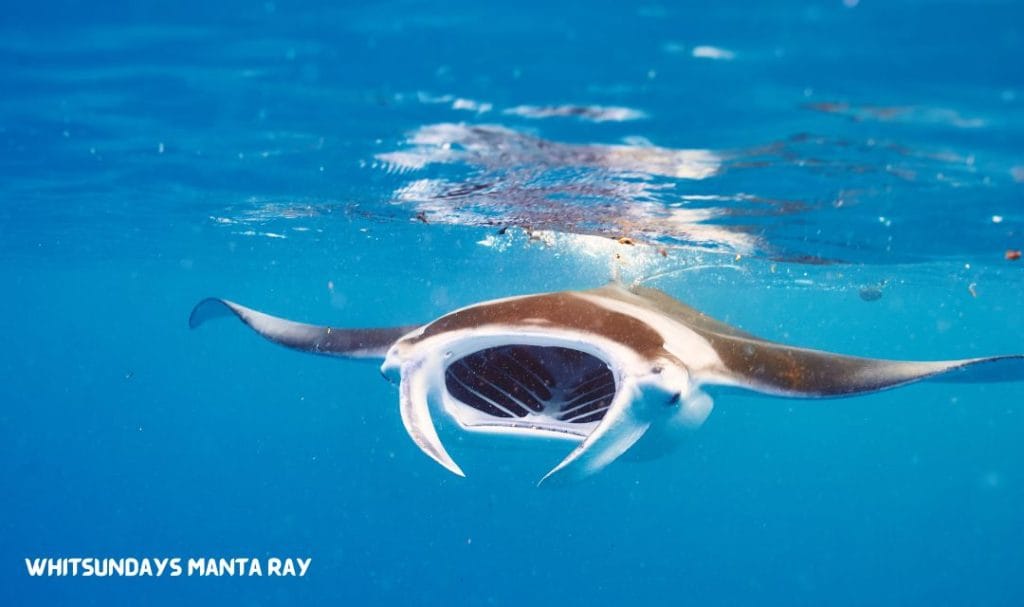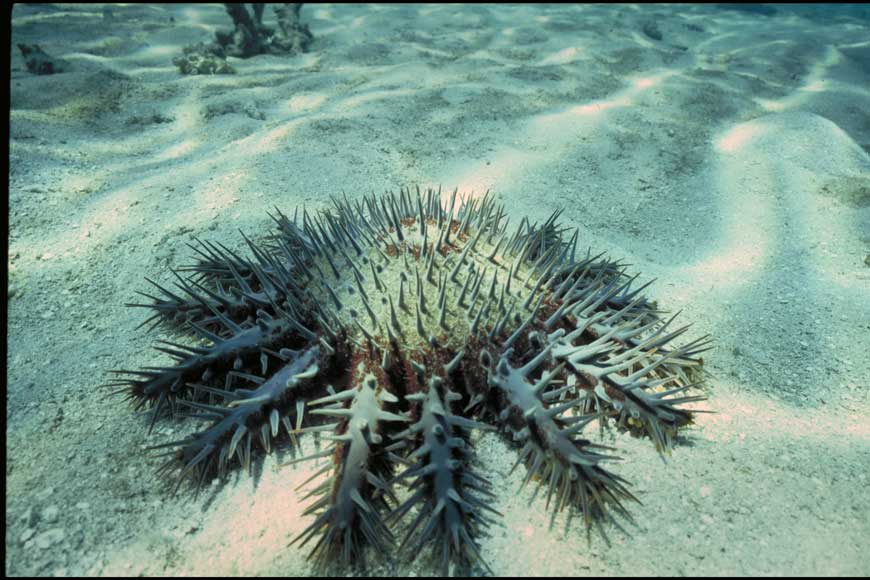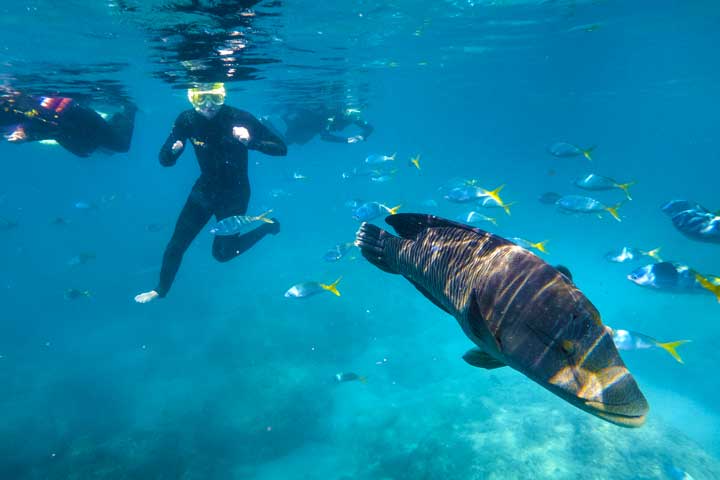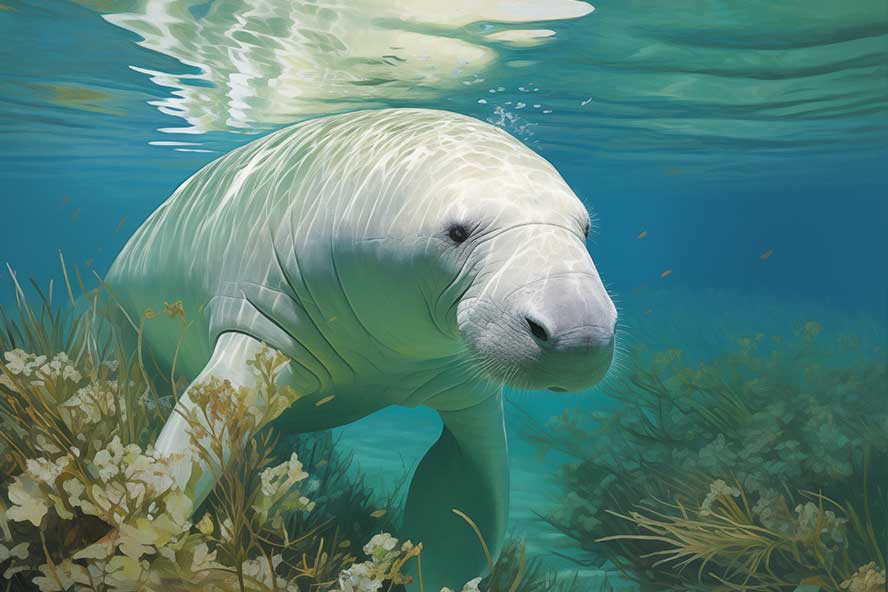Dryander National Park
Dryander National Park offers a unique blend of rugged mountain landscapes, lush forests, and vital marine habitats, making it a haven for wildlife and a peaceful escape for nature lovers. Located just north of Airlie Beach, this national park plays a crucial role in protecting endangered species and preserving the natural beauty of the Whitsunday region.
Location and Access
Dryander National Park is situated on the mainland approximately seven nautical miles (13 kilometres) north of Airlie Beach and is accessible primarily by boat. Its proximity to the Whitsundays makes it a popular yet secluded destination for those exploring the region’s natural wonders.
Natural Features and Terrain
With large mountainous terrain, Dryander National Park stretches across 55 kilometers of pristine coastline. Its landscape includes six headlands and Mount Dryander, rising to 790 meters above sea level, offering spectacular views of the surrounding seascape.
Formed by volcanic activity dating back 300 million years, Dryander’s bulky hills and steep ridges showcase granite formations and the volcanic legacy of the Airlie Volcanics. These rugged features create critical watersheds for seasonal rivers, streams, and creeks that feed into the nearby reefs.
The park’s diverse ecosystems support vine thickets and old-growth forests, including the rare and endemic Ristantia waterhousei, a rainforest tree that can reach heights of 45 meters. Dryander is recognized as a Gondwana refuge, harbouring 52 species of plants that are national, state, or locally significant, making it a vital stronghold for biodiversity.
Flora and Fauna
Dryander National Park is a critical habitat for various endangered and vulnerable species. Among its most notable residents is the Proserpine rock-wallaby, an endangered species that relies on the park’s undisturbed environment for survival. Additionally, the park is home to ghost bats, coastal sheath-tail bats, and the rare water mouse. These species thrive in Dryander’s protected environment, which offers refuge from increasing habitat fragmentation caused by urban development.
The park’s deeply incised coastline shelters seagrass beds, which are vital feeding grounds for dugongs and other marine life. Humpback whales and marine turtles are frequently spotted in the waters around Dryander, further highlighting the park’s ecological importance.
Cultural Significance
The Gia and Ngaro Peoples have a profound connection to Dryander National Park. For thousands of years, they have lived in harmony with this land and continue to care for its natural and cultural values. Visitors are encouraged to respect their traditional knowledge and custodianship by helping to preserve this remarkable land and sea Country.
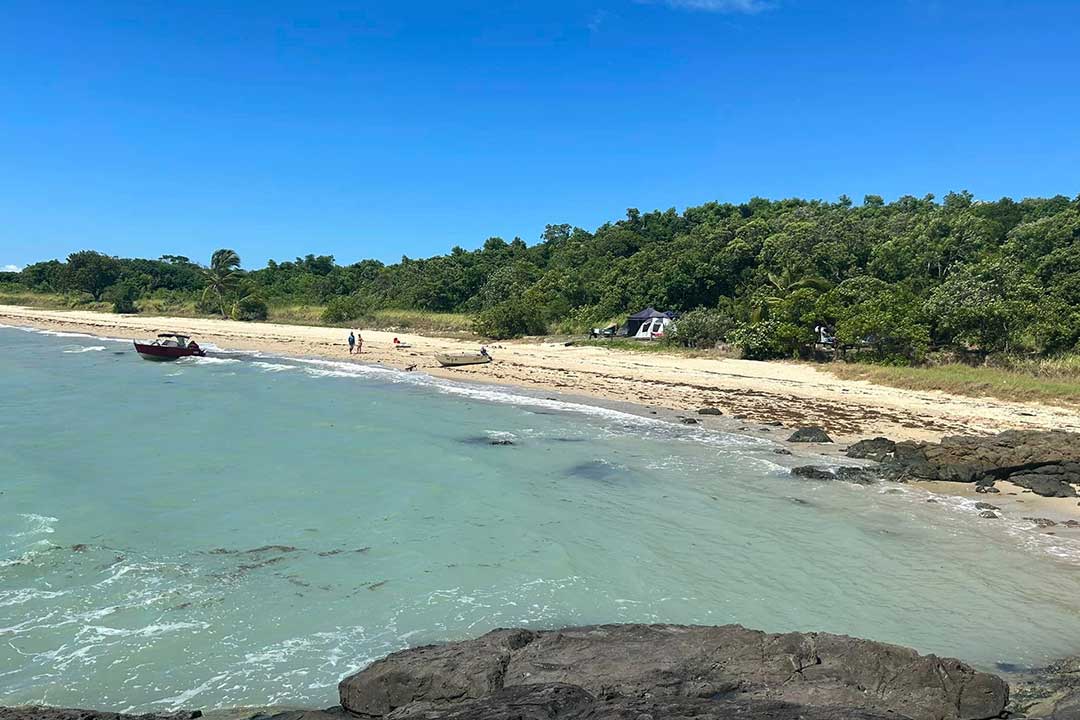
Camping at Dryander National Park
For those seeking an immersive experience in nature, the Grimston Point camping area offers a peaceful and secluded retreat.
Grimston Point Camping Area
- Access: By boat only, located seven nautical miles north of Coral Sea Marina, Airlie Beach.
- Camping Options: Only tent camping is allowed.
- Facilities: Basic facilities are provided, including toilets, but no showers or barbecue areas exist.
- Campfires: Not permitted.
- Permits: Camping permits are required and must be secured in advance. Ensure your camping tag displays a valid booking number.
When camping, please practice minimal-impact principles. Remove all rubbish and follow guidelines to help protect this fragile environment.
Park-Specific Conditions
- Weather: Be prepared for changing weather conditions, especially in this coastal region.
- Marine Stingers: Take care when swimming around the Whitsunday Islands and Mainland, particularly between October and May, as marine stingers are present in these waters.
Resources –
Other National Parks in the Whitsundays
Conway National Park
Whitsundays National Park
Molle Islands National Park
Dryander National Park FAQ
How do I get to Dryander National Park?
Dryander National Park is only accessible by boat. It is located seven nautical miles (13 kilometers) north of Coral Sea Marina in Airlie Beach. Visitors heading to Grimston Point camping area must arrange boat transport, as there is no vehicle access to the park.
Where can I camp in Dryander National Park?
Camping is only permitted at Grimston Point camping area, which is accessible by boat. Be sure to obtain a camping permit in advance and follow the park’s minimal impact guidelines.
What wildlife can I see in Dryander National Park?
Dryander National Park is home to a variety of endangered and vulnerable species. You may spot the Proserpine rock-wallaby, as well as ghost bats, coastal sheath-tail bats, and the water mouse. The coastline also provides habitat for dugongs, humpback whales, and marine turtles.
Are there any facilities at Grimston Point camping area?
Grimston Point camping area has basic toilet facilities, but there are no showers, barbecues, or other amenities. Campfires are not permitted, so plan accordingly when preparing meals.
What is the best time to visit Dryander National Park?
While the park is open year-round, visitors should be cautious of marine stingers between October and May. Always check weather conditions in advance and be prepared for sudden changes, as the coastal environment can be unpredictable.
Hi, I’m Nath J, a long-time local who’s been lucky enough to live and work tourism in the Whitsundays since 2001.
Over the past two decades, I’ve helped visitors discover the best of this incredible region, from Whitehaven Beach and Hill Inlet to the hidden spots only locals know about. I started out managing boats and tours, and these days I run Ripple Effect Online, a tourism-focused digital marketing business helping local operators grow and connect with travellers like you.
I’ve written an ebook called Whitsunday Islands: A Journey through Paradise, created countless local travel guides, and earned recognition as a “Whitsundays Tourism Hero” from QTIC for my contribution to the region and gained First Nations Cultural Protocol training through QTIC as well. But more importantly, I’ve spent years listening to travellers, understanding what makes a trip unforgettable, and helping people plan the kind of experience they’ll talk about for years.
If you’re planning a visit to Whitehaven Beach or anywhere in the Whitsundays, I’m here to help you make it amazing.
Find me on Facebook and LinkedIn or drop me an email at info@nath-j.au.

